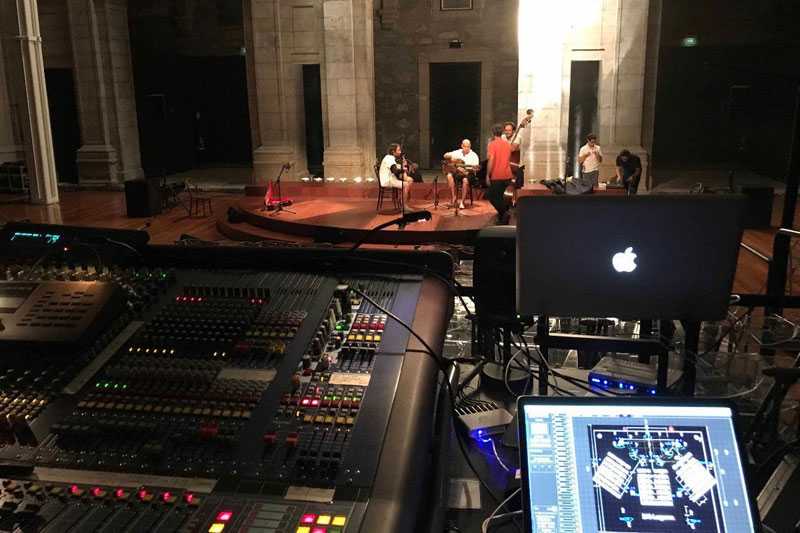TiMax immersive audio in Porto monastery
- Details

Leal explains: “Having followed the developments of the TiMax system for some time and wishing for the system when I met some challenging shows requiring different sound perspectives simultaneously, I finally found the opportunity this year to apply the system in a real context, in a Fado concert where movement throughout the performance is tradition.”
The concert played in the covered, wooden-floored courtyard of the Monastery to a three section, fan-shaped audience position, during an International Music Week event that also doubled as album launch for the band.
The multi-channel speaker system for the event, designed by Francisco Leal in discussion with Out Board’s Dave Haydon, who visited the venue to help fast-track the TiMax set up and programming, featured a rented TiMax SoundHub-S16 processor feeding all speakers separately via analogue outputs, and receiving mic and effects signals via analogue inputs fed from a Midas H2000 console.
The main PA comprised four Meyer UPA1’s as front and rear left and right pairs, with six Roland SRS120 speakers in pairs as left and right side surrounds for each seating section. Four Meyer UPM1P’s were positioned on the stage as front-fills, with an additional flown cabinet for overhead effects, plus some Meyer subs positioned left and right of the stage.
The tradition of Fado is that the musicians change positions during songs, so TiMax Cues were implemented to create localisations for each movement, as well as to produce an overall immersive spatial environment for the band’s standard stage format with the singer up front.
The other positionings for the four-piece band saw the two guitarists - standard acoustic and a large mandolin-style Portuguese guitar - move to sit in the chairs by the left and right PA stacks; or the Portuguese guitar player seated behind the band with the acoustic guitar sat far right, under an arch away from the rest of the band.
Leal concludes: “The results was astonishing, creating a solid, three-dimensional sense of instruments in the locations - the etymology of where the word stereophony derives! TiMax added massively to the scenes, the soundscapes and the effects, bringing these sounds to credible new life in the space.”
(Jim Evans)
















